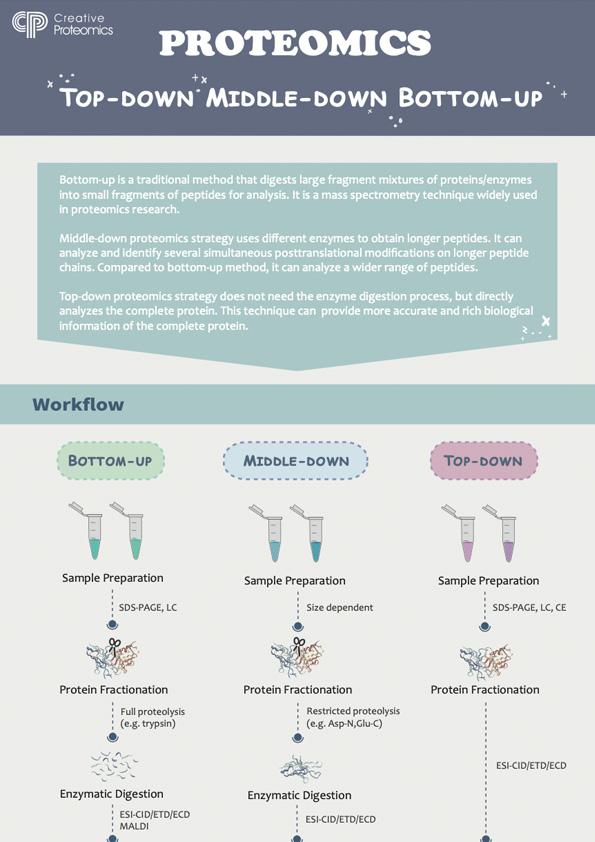In the rapidly evolving field of proteomics, the journey from complex biological samples to meaningful data hinges on one critical phase: sample preparation. As researchers strive to decode the intricate language of proteins, the strategies employed during this initial step can make or break a project’s success. This guide to proteomics project planning delves into the essential sample preparation techniques, offering a roadmap to optimize accuracy, reproducibility, and depth of analysis. Whether you’re navigating the challenges of complex matrices or aiming to enhance protein detection, understanding these foundational strategies is key to unlocking the full potential of proteomic technologies.
Effective Sample Collection and Preservation Techniques for Reliable Proteomic Analysis
Optimizing the integrity of protein samples starts at the moment of collection. Immediate processing or rapid freezing using liquid nitrogen effectively halts enzymatic activity, preserving the native proteome. When collecting biological fluids or tissue biopsies, it’s crucial to minimize exposure to ambient temperature and avoid repeated freeze-thaw cycles that degrade protein quality. Employing protease and phosphatase inhibitors during collection further safeguards protein modifications and prevents degradation, ensuring that downstream analyses reflect the true biological state.
Preservation strategies must align with the specific proteomic workflow planned. For example, snap freezing combined with storage at -80°C is standard for long-term preservation, but for some labile proteins, the addition of stabilizing agents or specialized storage buffers is beneficial. Consider the following best practices for maximum reproducibility:
- Standardize collection protocols to reduce variability
- Use proper labeling and tracking to avoid sample mix-ups
- Employ cold chain logistics when transporting samples
| Sample Type | Preferred Preservation | Special Considerations | ||||||||||||||||||||||||||||||||||||||
|---|---|---|---|---|---|---|---|---|---|---|---|---|---|---|---|---|---|---|---|---|---|---|---|---|---|---|---|---|---|---|---|---|---|---|---|---|---|---|---|---|
| Plasma/Serum | Snap freeze, -80°C | Add protease inhibitors immediately | ||||||||||||||||||||||||||||||||||||||
| Tissue Biopsy | Liquid nitrogen snap freeze | Minimize ischemia time | ||||||||||||||||||||||||||||||||||||||
| Cell Lysates | Immediate lysis & cold storage It looks like your table got cut off at the “Cell Lysates” row. Here’s a completed version of the table with typical recommended preservation methods and special considerations for cell lysates, continuing the style and content from your provided text:
Let me know if you’d like me to help with further details or additional sample types! Optimizing Protein Extraction Methods to Maximize Yield and IntegrityMaximizing protein yield while preserving structural integrity requires a delicate balance of extraction conditions tailored to the specific biological matrix. Factors such as buffer composition, pH, ionic strength, and the presence of protease inhibitors must be meticulously optimized. For example, selecting a detergent that disrupts membranes without denaturing proteins can significantly improve solubilization efficiency. Additionally, maintaining samples at low temperatures and minimizing processing time helps to prevent proteolytic degradation, ensuring that sensitive proteins remain intact for downstream analyses. Employing a strategic combination of mechanical disruption methods like sonication or bead beating with chemical lysis can further enhance extraction efficiency. Moreover, it is essential to evaluate different protocols through preliminary trials utilizing quantitative yield assessment and integrity checks via SDS-PAGE or Western blotting. The following table summarizes common extraction variables and their typical effects on protein recovery and quality:
Tailoring Sample Cleanup and Enrichment Approaches for Enhanced Detection SensitivityAchieving high detection sensitivity in proteomics often hinges on refining sample cleanup and enrichment techniques to match the unique attributes of each specimen. Sample complexity and the presence of contaminants can obscure low-abundance proteins, making tailored approaches essential. By selectively removing interfering substances-such as salts, detergents, and lipids-while preserving the target analytes, researchers can significantly enhance mass spectrometry signal quality and data reliability. Common strategies include solid-phase extraction (SPE), ultrafiltration, and protein precipitation, each adaptable through modifications in resin types, solvent compositions, or membrane cut-offs depending on the biological matrix. Enrichment protocols focus on concentrating peptides or protein fractions of interest, often leveraging specific binding chemistries or physicochemical properties. For example, phosphopeptide enrichment using immobilized metal affinity chromatography (IMAC) enables targeted analysis of post-translational modifications, whereas glycoprotein capture methods isolate subsets crucial for biomarker discovery. Employing a combination of cleanup and enrichment can be orchestrated through thoughtful workflow design, as illustrated in the table below, outlining common pairs and their ideal applications:
Choosing the optimal combination depends on sample type, downstream analytical goals, and instrument sensitivity. Iterative testing and adjustment of parameters-such as pH, salt concentrations, or buffer components-can unlock superior enrichment efficiencies. Integrating automation and miniaturization further contributes to reproducibility and throughput, paving the way for robust proteomic discoveries with unparalleled sensitivity. The Way ForwardIn the intricate world of proteomics, meticulous planning and thoughtful sample preparation stand as the foundation for meaningful discovery. As we’ve explored in this guide, selecting the right strategies not only enhances the accuracy and depth of your analysis but also paves the way for reproducible and insightful results. By embracing these best practices and staying attuned to evolving technologies, researchers can confidently navigate the complexities of proteomics, transforming raw samples into the stories proteins have to tell. Ultimately, successful project planning is the key that unlocks the full potential of proteomic exploration. |
